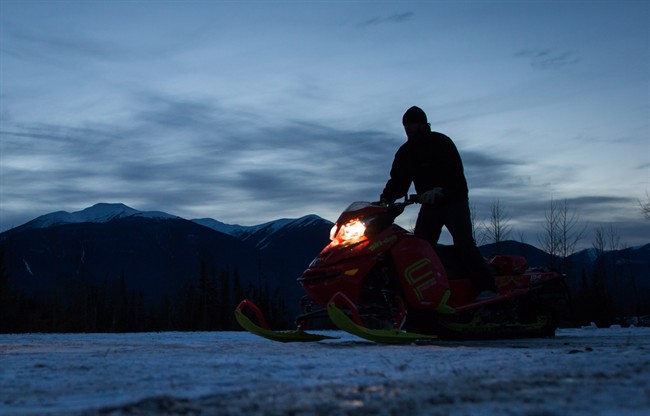TORONTO – Most people killed in skiing, snowboarding or tobogganing crashes in Ontario over two decades were unsupervised at the time, including a case in which an intoxicated teen rode an inflatable raft down a ski hill after hours, according to a report aimed at preventing such deaths.

Forty-five people died in winter sports-related incidents between 1991 and 2012, more than three-quarters of them male, a report by the Ontario Office of the Chief Coroner said.
The highest proportion of fatalities – 40 per cent – was among those 17 or younger, which the organization said is consistent with previous studies.
READ MORE: Snowmobile collision near Sudbury leaves two dead, sends toddler to hospital
Head injuries were the most common cause of death, cited in 50 per cent of the cases, followed by multiple injuries, which accounted for 13 deaths. In more than half of the cases, the person crashed into a tree or several trees, though at least one case saw someone collide with a pole.
The review, published late last year, came in response to the deaths of five youths – four skiers and a snowboarder – while on separate school outings in the province in recent years.
“It is our hope that this report and its recommendations will prevent similar future tragedies, creating a safer Ontario in which all recreational winter sports enthusiasts can enjoy skiing, snowboarding and tobogganing,” Roger P. Skinner, the regional supervising coroner, said in the report.
A tragic tobogganing accident in Calgary earlier this month triggered an outpouring of grief across the country.
Jordan and Evan Caldwell, two teenage twin brothers, were killed after sledding down the city’s Olympic bobsleigh track after hours and crashing into a barrier. Six others were injured.
The Ontario report said February and March are the most deadly months, with 74 per cent of cases occurring during that time.
Skiiers were most at risk, followed by tobogganers and then snowboarders, and those deemed highly experienced had the highest fatality rate at 31 per cent.
Most incidents took place during a social outing with family and friends, though five were during school events and one during competition.
Alcohol and drug use were confirmed in 15 per cent of cases, and the use of a helmet in 24 per cent.
Wearing a helmet could help reduce the risk of serious and potentially fatal injuries in winter sports, the coroner’s office said.
“Government, safety organizations and the winter sport industry should collaborate to ensure universal helmet use through education, policy and/or legislation,” it said in its recommendations.
Helmet use is only mandatory in Ontario when skiers and snowboarders enter specialty terrain parks within a ski resort or when students are on a class trip.
The coroner’s office also said municipalities should consider creating “safe tobogganing zones” within parks that would be free of obstructions. In popular locations, trees located near toboggan hills could be padded, it added.
Only deaths classified as accidental were included in the review. Deaths due to natural causes while participating in winter sports, such as heart attacks, were left out.



Comments